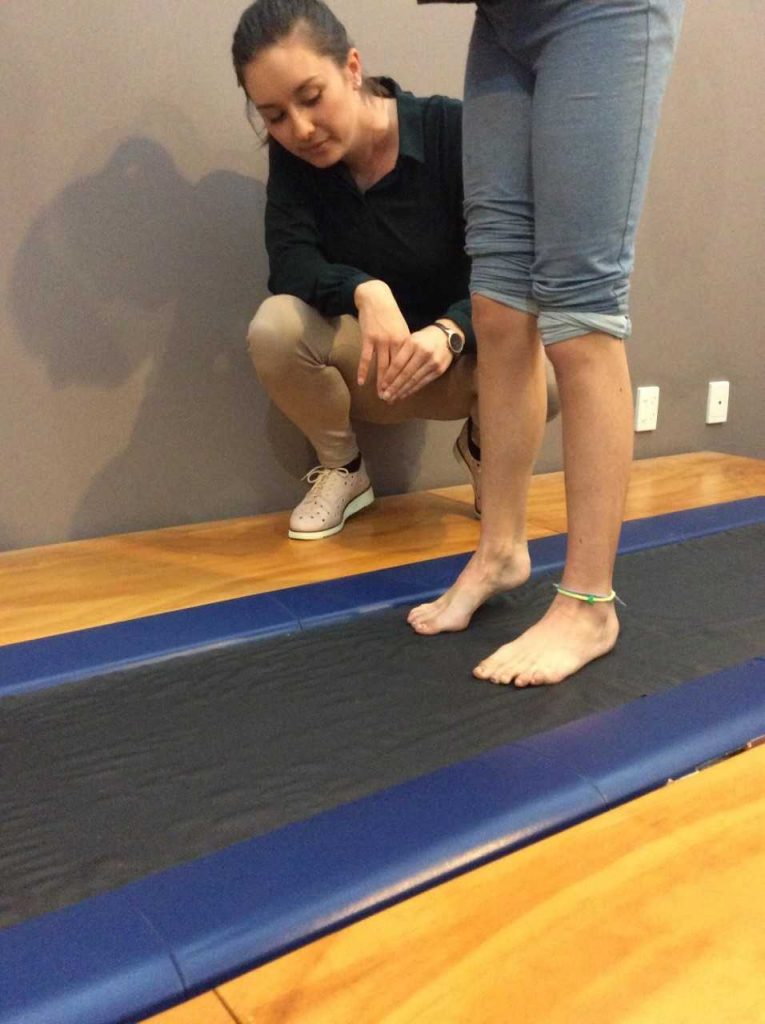Toe walking is believed to naturally occur as a child is developing a tandem heel-toe walking gait, and the heel-toe gait patterning becomes consistent generally prior to 24 months of age. Persistent toe walking beyond two years of age can be a cause for concern, and warrants further investigation in some cases as it can indicate possible underlying neuromuscular disorder.
Toe walking is often identified in children with cognitive developmental delay, speech and language disorders, or children with autism spectrum disorders. Conditions commonly associated with a toe walking gait include cerebral palsy, muscular dystrophy and orthopaedic problems, such as congenital talipes equinus (clubfoot).
The above differs from Idiopathic Toe Walking (ITW) as this is generally identified as children who walk on their toes, and in essence the cause is unknown. It is best described as a bilateral persistent toe walking, with or without fixed equinus (limited ankle flexion) contracture, without other observable etiologic abnormalities in patients greater than two years of age.
Children with ITW should generally exhibit a fairly unremarkable medical history with normal birth and development as well as normal orthopaedic status and neurological status, and no prominent neuropsychiatric disorders.
The aetiology of ITW continues to be investigated. Many theories exist including hereditary genetic disorders, increase in proportion of type 1 muscle fibres, sensory processing difficulties, and the use of infant walkers. Other research has identified ITW as children having the ability to walk with a heel strike but preferring to walk on their toes. Additionally, some of the literature has recognized that children with ITW often have limited ankle dorsiflexion (ankle flexion).
There appears to be a relationship between ankle equinus and persistent toe walking, therefore most treatments are focused on improving ankle range of motion.
A number of non-invasive and invasive treatment options have been proposed, including physical therapy (PT), orthopaedic footwear, serial casting, orthoses, Botulinum toxin type A (BTX-A), and soft-tissue surgery. All of these interventions attempt to correct the equinus position of the ankle with the expectation that gait changes would follow the positional correction.
There is poor consensus around the most effective method for treatment of idiopathic toe walking owing to the lack of a known etiology. Little evidence exists regarding long term effects of treatment. Orthotic management has been shown to be effective in the management of ITW, some research suggests that sequential orthotic treatment for children with idiopathic toe walking (ITW) may be beneficial. Initial treatment could include a less restrictive orthosis like a foot orthosis (FO); if this is unsuccessful within a set time frame, then the patient may require a more restrictive form of treatment such as an ankle–foot orthosis (AFO).
Overall, some good literature has established that casting, orthotics, and botulinum Toxin A injection, and stretching, all have positive improvements in ankle kinematic timing, and can have sustainable improvements long term. Surgical lengthening of the gastrocnemius-soleus complex and/or Achilles tendon is also an option when conservative measures have been exhausted with poor outcomes.
Ultimately, a detailed history, with careful documentation of the developmental history, and a thorough physical examination are required in the child with a primary report of toe walking. Treatment is based on age and the severity of the abnormality.

Tootlepegs is Resonance’s initiative to improve awareness and provide practical help for children who have physical limitations that make life challenging
Resonance Podiatrists are your specialists on biomechanical and developmental assessment, and can determine the necessary treatment/referral pathway needed!
References:
Karen Davies, Alec Black, Michael Hunt, Liisa Holsti. Long-term gait outcomes following conservative management of idiopathic toe walking. Gait & Posture. Volume 62, 2018, Pages 214-219, ISSN 0966-6362, https://doi.org/10.1016/j.gaitpost.2018.02.014.
Herrin K, Geil M. (2015). A comparison of orthoses in the treatment of idiopathic toe walking: A randomized controlled trial. https://doi.org/10.1177/0309364614564023
Williams CM, Pacey V, de Bakker PB, Caserta AJ, Gray K, Engelbert RHH. Interventions for idiopathic toe walking (Protocol). Cochrane Database of Systematic Reviews 2016, Issue 10. Art. No.: CD012363. DOI: 10.1002/14651858.CD012363.

